Showing Spotlights 209 - 216 of 336 in category All (newest first):
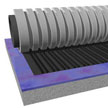 In an effort to find a way to introduce folds or waves into graphene in a simple and large-scale way, researchers have invented a rubber-stamp printing method to introduce waves into the graphene. The ability to controllably form folds in graphene has significant research and technological applications. Induced folds have a sublithographic width and macroscopic length. They could be used as channel materials or interconnects in chips, and it has been shown that stable field emitters are formed by folded graphene.
In an effort to find a way to introduce folds or waves into graphene in a simple and large-scale way, researchers have invented a rubber-stamp printing method to introduce waves into the graphene. The ability to controllably form folds in graphene has significant research and technological applications. Induced folds have a sublithographic width and macroscopic length. They could be used as channel materials or interconnects in chips, and it has been shown that stable field emitters are formed by folded graphene.
Feb 16th, 2015
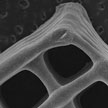 The successful implementation of graphene-based devices invariably requires the precise patterning of graphene sheets at both the micrometer and nanometer scale. It appears that 3D-printing techniques are an attractive fabrication route towards three-dimensional graphene structures. Researchers have now used flakes of chemically modified graphene, namely graphene oxide GO and its reduced form rGO, together with very small amounts of a responsive polymer, to formulate water based ink or pastes to be used in 3D printers.
The successful implementation of graphene-based devices invariably requires the precise patterning of graphene sheets at both the micrometer and nanometer scale. It appears that 3D-printing techniques are an attractive fabrication route towards three-dimensional graphene structures. Researchers have now used flakes of chemically modified graphene, namely graphene oxide GO and its reduced form rGO, together with very small amounts of a responsive polymer, to formulate water based ink or pastes to be used in 3D printers.
Feb 9th, 2015
 A comprehensive analysis of the fundamental properties, synthesis approaches and the future prospects of silicene, germanene, stanene, and phosphorene. It covers the literature on the fundamental properties of graphene analogous elemental sheets, inclusive of both theoretical and experimental knowledge. Various bottom-up synthesis techniques and top-down exfoliation approaches for the fabrication of two-dimensional elemental sheets are discussed.
A comprehensive analysis of the fundamental properties, synthesis approaches and the future prospects of silicene, germanene, stanene, and phosphorene. It covers the literature on the fundamental properties of graphene analogous elemental sheets, inclusive of both theoretical and experimental knowledge. Various bottom-up synthesis techniques and top-down exfoliation approaches for the fabrication of two-dimensional elemental sheets are discussed.
Jan 21st, 2015
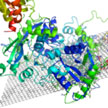 Researchers have developed a simple method to thermally ablate highly resistant cancer cells using targeted biodegradable graphene nanoparticles. They found that graphene can convert non-ionizing radio waves - the same that are used in FM radios - into heat energy at microscopic levels. This heat is sufficient to completely destroy proteins and DNA inside individual cancer cells, irrespective of any kinds of resistant mechanisms that drives cancer cells at advanced stages.
Researchers have developed a simple method to thermally ablate highly resistant cancer cells using targeted biodegradable graphene nanoparticles. They found that graphene can convert non-ionizing radio waves - the same that are used in FM radios - into heat energy at microscopic levels. This heat is sufficient to completely destroy proteins and DNA inside individual cancer cells, irrespective of any kinds of resistant mechanisms that drives cancer cells at advanced stages.
Jan 16th, 2015
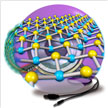 Researchers have identified novel 2D wide-band-gap semiconductors with high stabilities, namely monolayer arsenene and antimonene. These materials are indirect wide-band-gap semiconductors, and under strain, they become direct band-gap semiconductors. For arsenene and antimonene, such dramatic transitions of electronic properties could open a new door for nanoscale transistors with high on/off ratio, blue/UV optoelectronic devices, and nanomechanical sensors based on new ultrathin semiconductors.
Researchers have identified novel 2D wide-band-gap semiconductors with high stabilities, namely monolayer arsenene and antimonene. These materials are indirect wide-band-gap semiconductors, and under strain, they become direct band-gap semiconductors. For arsenene and antimonene, such dramatic transitions of electronic properties could open a new door for nanoscale transistors with high on/off ratio, blue/UV optoelectronic devices, and nanomechanical sensors based on new ultrathin semiconductors.
Jan 14th, 2015
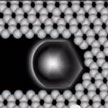 A widely discussed method for the patterning of graphene is the channelling of graphene by metal nanoparticles in oxidizing or reducing environments. Researchers have now performed in-situ transmission electron microscopy experiments of silver nanoparticles channeling on graphene and discover that the interactions in the one-dimensional particle-graphene contact line are sufficiently strong so as to dictate the three-dimensional shape of the nanoparticles.
A widely discussed method for the patterning of graphene is the channelling of graphene by metal nanoparticles in oxidizing or reducing environments. Researchers have now performed in-situ transmission electron microscopy experiments of silver nanoparticles channeling on graphene and discover that the interactions in the one-dimensional particle-graphene contact line are sufficiently strong so as to dictate the three-dimensional shape of the nanoparticles.
Dec 19th, 2014
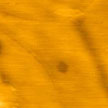 The surface force balance (SFB) provides measurements of surface and colloidal forces in liquids such as electrostatic surface forces, van der Waals forces, and solvation forces. Until now, the SFB required mica sheets as the substrate for measurements. This was the only material available in an atomically smooth state over centimeter-scale areas as well as being optically transparent as required for the optical interferometry. By replacing the mica sheets with graphene, electrically conducting and atomically smooth surfaces for the measurement of surface forces have now been created.
The surface force balance (SFB) provides measurements of surface and colloidal forces in liquids such as electrostatic surface forces, van der Waals forces, and solvation forces. Until now, the SFB required mica sheets as the substrate for measurements. This was the only material available in an atomically smooth state over centimeter-scale areas as well as being optically transparent as required for the optical interferometry. By replacing the mica sheets with graphene, electrically conducting and atomically smooth surfaces for the measurement of surface forces have now been created.
Dec 10th, 2014
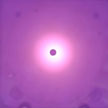 Graphene's properties appear to have almost limitless application potential, ranging from composite materials for the aerospace industry, next-generation batteries and supercapacitors, flexible displays and optical electronics and biosensors for applications in healthcare and medical devices. So why hasn't graphene, with the potential to vastly outperform the majority of currently available materials, been integrated into everything from wristwatches to ocean liners?
Graphene's properties appear to have almost limitless application potential, ranging from composite materials for the aerospace industry, next-generation batteries and supercapacitors, flexible displays and optical electronics and biosensors for applications in healthcare and medical devices. So why hasn't graphene, with the potential to vastly outperform the majority of currently available materials, been integrated into everything from wristwatches to ocean liners?
Dec 4th, 2014
 In an effort to find a way to introduce folds or waves into graphene in a simple and large-scale way, researchers have invented a rubber-stamp printing method to introduce waves into the graphene. The ability to controllably form folds in graphene has significant research and technological applications. Induced folds have a sublithographic width and macroscopic length. They could be used as channel materials or interconnects in chips, and it has been shown that stable field emitters are formed by folded graphene.
In an effort to find a way to introduce folds or waves into graphene in a simple and large-scale way, researchers have invented a rubber-stamp printing method to introduce waves into the graphene. The ability to controllably form folds in graphene has significant research and technological applications. Induced folds have a sublithographic width and macroscopic length. They could be used as channel materials or interconnects in chips, and it has been shown that stable field emitters are formed by folded graphene.
 Subscribe to our Nanotechnology Spotlight feed
Subscribe to our Nanotechnology Spotlight feed





